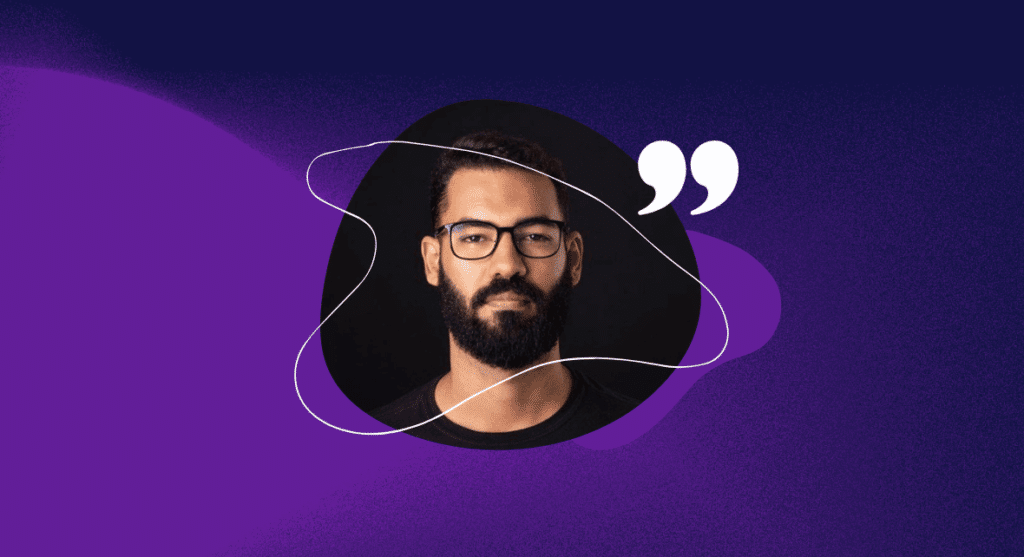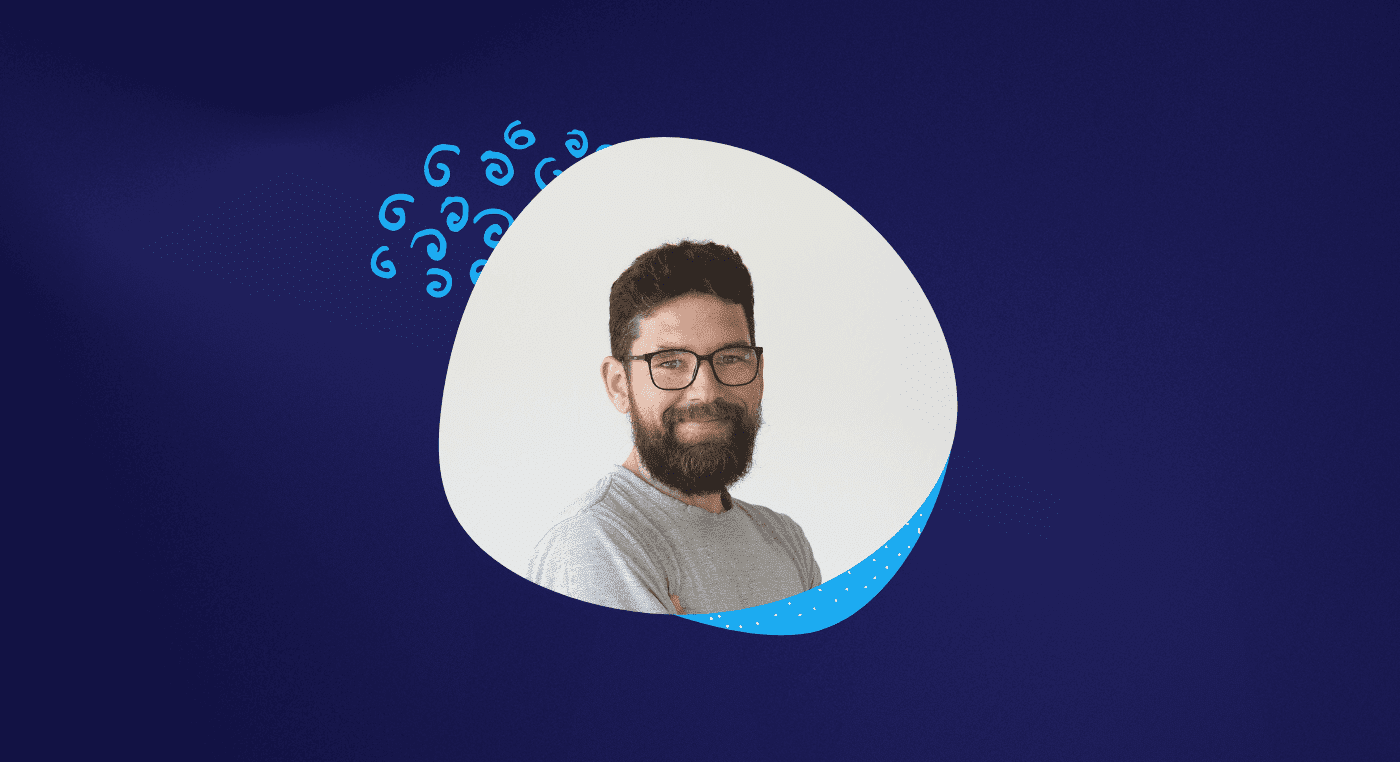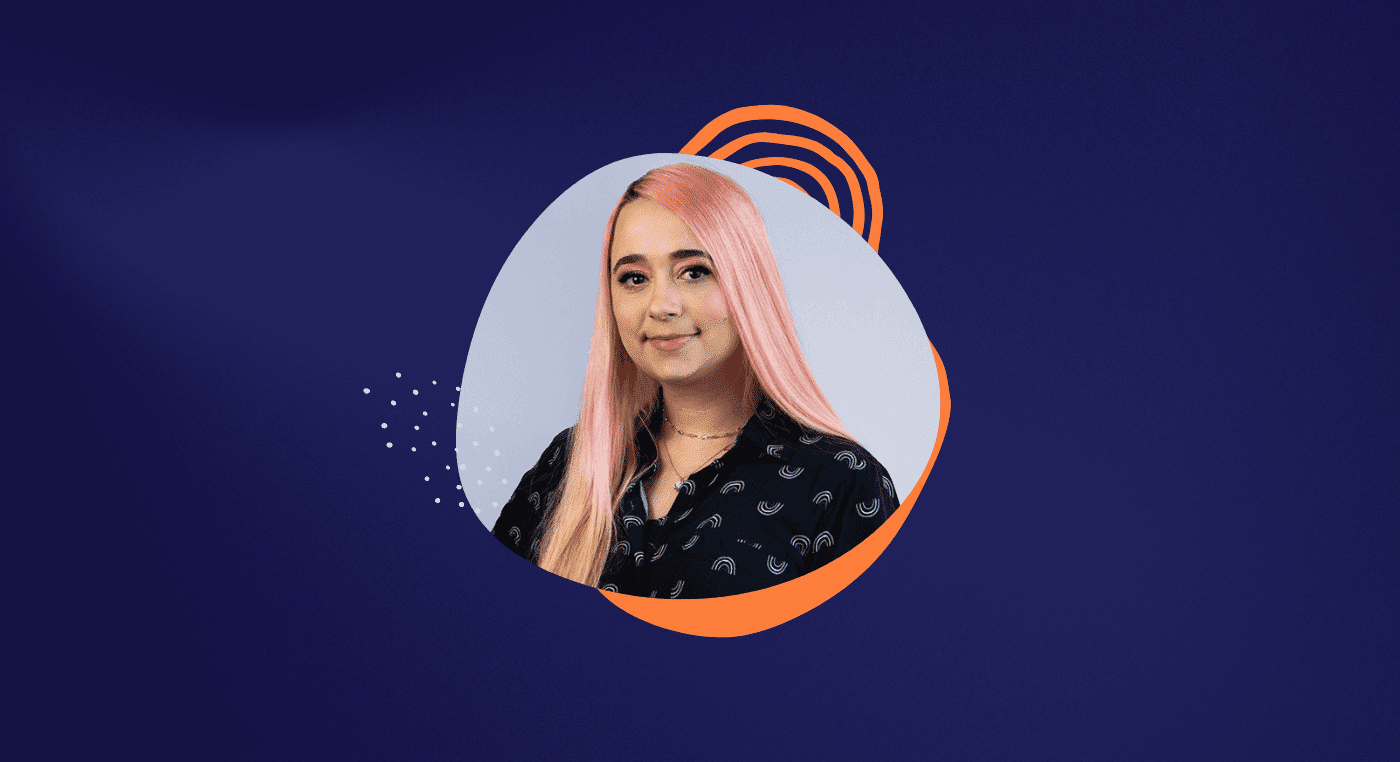In this interview, Leandro Arantes, a Mastering Interface Design (MID) student, shares his experience of pivoting into a UX design career.
Leandro was Head of Digital at an advertising agency, but he began feeling frustrated with his work at the same time as he developed a genuine passion for usability.
In our conversation, he opens up about how he strategically planned and executed his career transition, taking proactive measures to minimize the risks involved in this process.
Leandro also emphasizes the value of staying calm and planning ahead.
I listed all the contributions I believed I could make to the company and made it clear that what I wanted for my future was aligned with the position I was interviewing for, not my current role as Head of Digital. – Leandro Arantes
Leandro, please tell us a bit about yourself.
Hi Felipe, I would like to thank you for the opportunity to be here and chat with you. I really appreciate how close we are to you guys at Aela.
Well, I'm Leandro, 32 years old, from Brazil. My background is in advertising and communication, with experience in advertising agencies. I have an MBA in Marketing and a graduate course in Digital Marketing.
Throughout my professional life, I have held positions such as Art Director, Creative Leader, Coordinator, and eventually, Head of Digital, where I became more interested in data and media.
I worked in this market for about 7 to 8 years, with experience in design and visual elements.

Why did you decide to transition to UX and Product Design, despite having a stable situation and good experience?
I think you mentioned an important word: I was stable.
In my last agency, I was Head of Digital and had a lot of freedom and autonomy to develop projects, talk to clients, hire people, and so on. I also had a close relationship with the CEO.
Financially, I was also comfortable with a good structure to support my family – I'm married and have a child.
But one thing that was bothering me, especially in the agency environment, was the subjectivity of advertising.
You create a piece or a layout, not thinking about the audience but to please the client, the owner, the owner's daughter, or the client's boyfriend!
This type of situation started to annoy me. As you mature professionally, these situations start to bother you more than they should.
Partly because of this, I began to get more involved with usability, coordinating website development with web designers.
I grew fond of usability because I wanted to understand the logic and reasons for using certain resources to achieve a specific result. Why this path and not others?
With this, I delved deeper into the subject, and that was when the turning point came!
Reading Tip: How User-Centered Design Can Benefit Everyone
And when that happened, what were your expectations for the UX Design field?
I expected to learn more about UX and usability. I always liked to study, so I began looking for materials on my own.
That's when I found Aela's blog, which already had a lot of information about UX. I understood that it could serve as a guide for me to understand which path I could follow.
At first, when I was getting more interested, I had no intention of switching careers. As I mentioned, I was stable and secure in my job.
But as I better understood the field, I became increasingly drawn to it. So this interest grew into a desire to transition my career.
I didn't expect this transition to be so quick and enjoyable!

How was the moment when you decided to study for real? Did you ever build up a routine?
I usually say I did an MVP (Minimum Viable Product) in my studies.
In this sense, I started "in the cheapest way", by looking for materials about UX Design online and buying books.
Additionally, I talked a lot with a friend of mine who was already in the Product Design field, a very experienced person!
So, I did this MVP and read everything I could. As a result, I began to apply some concepts to the processes of the agency, like user interviews and A/B tests.
I sort of used the agency as a laboratory, thanks to the freedom I had.
When the pandemic broke out in 2020, I started working from home. My wife was pregnant, and I gained considerable time in my routine. I didn't need to go out or commute.
At that moment, I thought: now is the time!
I had been considering Aela for a while, reading your content and watching the interviews with students. So I decided to completely switch gears and join the MID program.
Then I set up a daily routine of about 1 or 2 hours to be able to study. My routine remained basically the same: reading books, watching classes, and trying to apply the concepts in the agency where I worked.
Reading Tip: 11 Reasons that Make the MID an Incredible UX/Product Design Program
Pandemic, studies, pregnant wife! How did you manage to stay focused?
My wife and I are pretty laid-back, actually. Due to the pandemic and chaotic scenario, we didn't have much to do.
The thought was: I'm already at home all day, in the office, we're together, and everything is fine. I'll study for an hour, and if anything happens, just open the door and call me!
And it's all right! Because unexpected things happen, we knew that already.
We had the security of both being at home, which was very important.
We were very collaborative, and my wife is very calm. What we did was a mini-crisis management. Pandemic scenario, pregnancy, and everything else. We talked a lot about all of this.
One of my motivations was precisely the birth of my son. I wanted a better quality of life and no longer arrive every day at 10 pm, have meetings on Saturdays, or have to travel for work.
I wanted to have a structure to better attend to my family, and this was an important thought that was fulfilled months later.
Projecting where I wanted to be and how I wanted to be helped me stay focused on studying during this period!

How was your transition process to UX Design? How long did it take?
I have a cool story about the speed of my transition to UX and the illusion we create about it.
I joined the MID program in the 2020 class in April and had that initial sprint of studying, trying to keep up with the routine.
When I couldn't watch classes or study, I was reading books. That was also very important for me to better understand UX, usability, and how people worked.
A couple of months into the course, after delivering the first project of level zero, an opportunity came up, a job opening!
I applied for this job role and did well initially but didn't pass the final stages. And I got so frustrated! I was so disappointed that I even distanced myself from my studies.
But slowly, I went back to my process. That was when I had just finished level zero; I was still at the beginning! I was a little hasty, it wasn't a reason to discourage myself so much at that moment.
Despite the negative result, the recruitment process experience was good for me. People liked my portfolio and how I presented the process. But I needed more experience for the job.
Making this analysis was good because it opened my mind and made me focus again on what I needed to do. Soon after my son's birth, I applied for another job opening, this time with much less anxiety and expectation.
The job was very good, and I had many doubts. I actually thought I wouldn't be possible to pass.
But they called me, and I spent a month in the selection process. Then, as soon as I returned from vacation, I got a call saying I had passed the process.
What I can say to people who want to switch to UX Design is to take it easy!
Things won't happen in 1 or 2 months. It's important to understand that the process of learning, testing, analyzing, talking to people, and reading materials takes time.
How much did you have to advance in the MID and UX Design studies to be prepared for this job?
I got the job when I was at level 1. So, it took me about 2 or 3 more months of studying and dedication.
During that time, I understood how the MID process could help me improve much more. With each project delivery at each level, I always analyzed to see what could be missing and what could be improved before sending the final version.
But then it hit me—I discovered that it's essential to get the projects out the door as soon as possible (with quality, of course) so you can fail, receive feedback, fix, and learn quickly! It all goes much faster.
Reading Tip: 11 Reasons that Make the MID an Incredible UX/Product Design Program
Have you received other proposals besides this job?
At the same time as the current job opening, there was another opportunity. A company called me saying that they wanted to hire me.
I talked to them, and they said the job was mine right away! At that moment, I remembered my anxiety about the first job I applied for, which I didn't get.
So, I held back the anxiety, tried to stay calm, and didn't accept it immediately. The other company called me the same night and said I had passed their process.
I was happy as I realized this job made much more sense to me than the other.
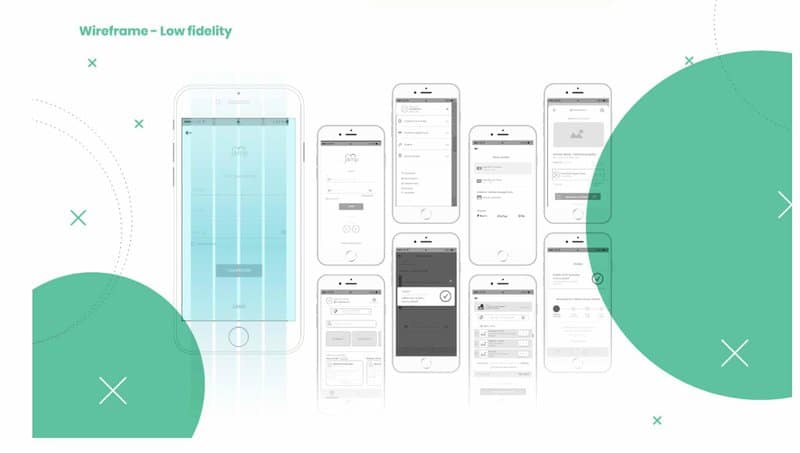
What was it like to transition from Head of Digital to a starting position in UX and Product Design? What impact did you feel?
In general, whoever decides to switch to UX needs to consider this situation; the pros and cons. Naturally, you will first have to compete for junior positions with a lower salary.
In my case, I got my first opportunity already as a mid-level designer. But I had already prepared myself for a junior role.
Everything was thought out, mainly because I had a young son, and I needed this transition to have the least possible impact. It was not an easy decision.
The tip I can give is to understand that you may need to embrace a junior opportunity, but this can also be a chance to build a robust portfolio, especially in this transition moment.
If you are taking the MID, take advantage of the mentors' feedback, and the course structure. Pay attention to the projects and build a good portfolio with them. This will allow you to compete for a better job.
In my case, I didn't suffer that much with the transition. The first salary in UX was well matched to what I earned before.
Moreover, the company I work for has a great structure, which is important.
If possible, look for mature and structured companies that offer good benefits. This will certainly help you in the transition.
At the end of the day, it all comes back to what we talked about: staying calm.
Analyze the company for which you are participating in the process. The market is very heated, but companies are different. Some are more mature than others. It's important to weigh these factors.
How did you explain your transition to the recruiters so that it made sense for you and the company?
This question is often asked during interviews, "If you already have a high-level position, why are you transitioning to a lower one?"
I have always been transparent and honest with this answer and shared my story just as I did during this conversation.
I explained that I had a career plan and knew where I wanted to be. I believed that working with the company I was interviewing for was the best way to fulfill that plan.
Furthermore, I listed all the contributions I believed I could make to the company and made it clear that what I wanted for my future was aligned with the position I was interviewing for, not my current role as Head of Digital.
Throughout the process, I emphasized honesty and transparency. It was great to see that what they were looking for was also what I wanted.
My tip is to be truthful with yourself and your job search process. Don't procrastinate or be arrogant.
Stick to what you really want, and you will find a coherent answer to this type of question.
Reading Tip: Pivoting to UX Design: Making an Action Plan for Success
You mentioned that you read many books about UX. Which ones do you recommend?
Several books were helpful to me!
The first recommendation is "Don't Make Me Think." This book is fundamental for anyone looking to understand how users behave in digital environments.
Therefore, I think it is essential for those who want to transition to UX.
Another book I recommend is "Jobs To Be Done." This book was important for me to better understand the design process.
I would also recommend the "User Experience Manual."
There are several other books worth checking out!
I suggest looking at the MID bibliography because they are all excellent resources.
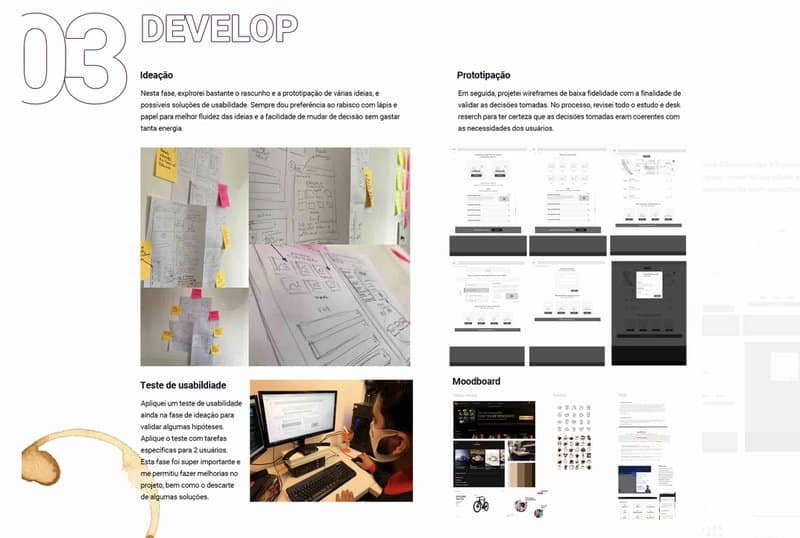
Finally, what was your biggest learning during this journey, and what advice would you give to Leandro from the past?
I would say: go for it and don't hesitate! Things happen, and you won't regret it!
The most significant lesson I have learned so far is understanding myself as a professional, recognizing my current situation, and identifying my limits.
I also suggest taking a calm and measured approach to career planning, respecting breaks, and avoiding the temptation to learn everything at once.
Rather than studying for eight hours a day, focus on making connections and reinforcing what you are learning.
Be mindful of taking breaks, as progress will happen naturally over time. This is a fact!


